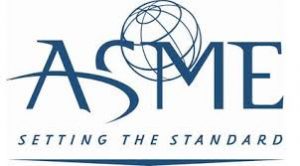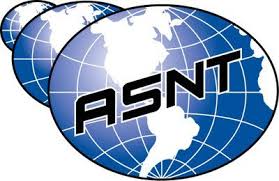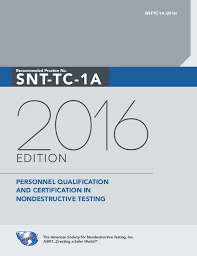Hai dei dubbi sulla Norma ISO 9712 ?
Domande e Articoli
Termini più utilizzati
Codice ASME indicazione di un Livello 3 ISO 9712 nella Written & Practice



Ho trovato molto utili le Vostre risposte
Mi sembra di capire dal codice ASME all’articolo 1 che può essere indicato un livello 3 ISO nella Written practice aziendale:
(f) National or international central certification programs, such as the ASNT Central Certification Program
(ACCP) or ISO 9712:2012-based programs, may be alternatively used to fulfill the training, experience, and examination requirements of the documents listed in (e) as
specified in the employer’s written practice.
La domanda : Quindi un livello 3 ISO 9712, in base a quanto indicato nella Written practice può istruire e qualificare personale al livello II secondo la sua WP + riferimento alla SNT-TC-1A?
Mi sembra che a questo punto basti fare riferimento alla WP ed quanto indicato nell’SNT-TC-1°
Grazie e Saluti
Buongiorno,
la ringrazio per il feedback sulle risposte precedenti.
Anche se non mi mette al riparo da diverse interpretazioni che possono essere date sulla domanda da lei posta, voglio precisare che prima di trarre la conclusione in seguito descritta ho visionato i seguenti documenti:
- Reccomended Practice N. SNT-TC-1A edizione 2016
- ASME Sez. V edizione 2017 Art.1 — T.120 — punti e); f)
- A Guide to Personnel Qualification and Certification by George C. Wheeler
- Interpreting SNT-TC-1A eighth edition (by ASNT) –> Inquiry 10-4
Rispondendo alla sua domanda posso dirle semplicemente di SI, un livello 3 ISO 9712, in base a quanto indicato nella Written practice può istruire e qualificare personale al livello II secondo la sua WP + riferimento alla SNT-TC-1A
Andando a motivare nel dettaglio la risposta direi che si può fare perchè previsto al punto f) di ASME Sez. V Art.1 — T.120 Come da lei citato.
Io aggiungerei, senza scomodare il punto f), che si può fare in quanto già previsto al punto e) di ASME Sez. V Art.1 — T.120. In questo punto viene citata la certificazione SNT-TC-1A.
Andando a vedere cosa dice la Recommended Practice SNT-TC-1A e i documenti di chiarimento sopra citati si può concludere che:
- per la certificazione SNT-TC-1A dei Livelli I e II la Preparazione e l'Amministrazione dell'esame può essere eseguita dal Datore di Lavoro (employer) o da un Agenzia Esterna.
- per la certificazione SNT-TC-1A dei Livelli III la Preparazione e l'Amministrazione dell'esame può essere eseguita dal Datore di Lavoro (employer), ASNT o da un Agenzia Esterna.
- Il Datore di Lavoro esegue o emette la Certificazione SNT-TC-1A
- Il Cliente Accetta ( o non Accetta) la Certificazione
Tornando al cuore del quesito la domanda da porsi è : cosa dice la Recommended Practice SNT-TC-1A in merito al Livello III responsabile degli esami ?
Ci vengono incontro i documenti "Interpreting SNT-TC-1A eighth edition (by ASNT)" e "A Guide to Personnel Qualification and Certification"
A Guide to Personnel Qualification and Certification punto 8.8
No examination should be prepared by the person who will take the examination; this caveat applies most of all to Level III personnel. The Level III examinations must be prepared by an NDT expert. If the "boss" is not an NDT expert, he/she should not assume that the position alone is enough of a qualification to prepare the examination.
The objective of NDT examinations is to demonstrate and document in a credible way that the candidate is qualified. The ASNT Level III certification (see page 7) is one way to document the candidate's qualifications, as are examinations by other qualified sources. Regardless of who prepares the examinations, the employer is still responsible for certifying (for example, issuing and signing the certificate) the individual according to the company written practice.
a Pagina 7 nel capitolo ASNT si legge
A Guide to Personnel Qualification and Certification pagina 7
Although ASNT Level III certification is not required by SNT-TC-1A, it is one of the options for satisfying the basic and method examination requirements, and it is required by a growing number of purchasers and regulatory bodies. There is also an ÒASNT Standard for Qualification and Certification of NDT Personnel,Ó approved by ASNT in 1989, that requires that every Level III working to that Standard possess an ASNT NDT Level III certificate before receiving employer certification as a Level III.
In fine nel documento "interpreting SNT-TC-1A eighth edition"
INTERPRETING SNT-TC-1A
Inquiry 10-4
May an employer appoint directly an EN 473 livel III as employer's NDT livel III after defined in employer's written practice to sign the certificates according to SNT-TC-1A in order to verify qualification of candidate for certification ?
The employer may use the examination results that he/she has determinated meet the requirement of the written practice. As stated in SNT-TC-1A, Paragraph 8,1,5 , the employer is responsible for ensuring the examination services meet the requirements of the employer's written practice. Certification can only be issued when it has been determined that all the requirements of the employer's written practice have been met.
Da quanto visto fin qui risulta che basta che la Written & Practice lo preveda il Livello III SNT-TC-1A può essere anche una persona Certificata secondo lo schema ISO 9712
Possiamo dire che chi scrive la prima Written & Practice "nomina" il Livello III responsabile. Ma chi può scrivere la prima Written & Practice ?
Anche in questo caso ci torna utile il documento "A Guide to Personnel Qualification and Certification"
Cap 5. Written & Practice
This section is one of the two mandatory sections of SNT-TC-1A. The written practice is nothing more than a procedure that defines who, what, when, where, and how you will conduct your PQ&C operations. You should prepare it with the same care and thoroughness that you use when preparing specifications for purchasing quality products and equipment. If you are not expert in NDT certification procedures, you should seriously consider engaging expert assistance in preparing your written practice
Il punto chiarisce che la Written & Practice deve essere scritta da una persona esperta in NDT ma NON da un Livello III, quindi il datore di lavoro o un suo consulente può redarre il documento e scegliere se lo schema ISO 9712 e gli esami della certificazione ISO siano sufficienti a soddisfare le esigenze dei controlli NDT aziendali.
CONCLUSIONE
La parola finale in ogni caso spetta al Cliente che deve accettare la Certificazione e la Written & Practice.
E' il cliente che potrebbe indicare che il Livello III che prepara e amministra gli esami sia persona certificata ASNT oppure che il Livello III SNT-TC-1A sia stato fatto attraverso una persona certificata ASNT livel III
Il Punto f) di ASME Sez V chiarisce che ISO 9712 può essere utilizzato alternativamente per soddisfare i requisiti di formazione, esperienza e esame dei documenti elencati in e)
Passaggi previsti da SNT-TC-1A:
- L'azienda scrive / emette la Written & Practice indicando i requisiti del Livello III
- Il Livello III viene incaricato formalmente dal datore di lavoro
- Se il Livello III ha una certificazione ISO 9712 deve integrare gli esami mancanti previsti da SNT-TC-1A ( domande su Recommended Practice, domande esame Specifico, ecc)
- Se il Livello III ha una certificazione ASNT la Recommended Practice dice che deve dimostare la conoscenza Specifica dei prodotti con gli esami o con lavori precedentemente fatti sugli stessi prodotti
- Le valutazioni degli esami dei Livelli III viene fatta dall'azienda con il divieto dell'autovalutazione. Non potrà essere il Livello III incaricato a gestire gli esami ma saranno gestiti da altro personale aziendale (interno o esterno). Per esempio l'esperto NDT che ha scritto la Written & Practice potrebbe preparare e amministrare gli esami integrativi per il Livello III incaricato.Gli esami saranno degli esami aziendali come previsto da SNT-TC-1A e saranno conservati in azienda a disposizione di chi ne ha facoltà di richiedere copia.
Il Livello III è incaricato direttamente dall'employer che verifica la sua formazione e conoscenza e se non fosse così sarebbe il problema dell'uovo e della gallina.
Nota personale: se il cliente non accetta il Livello III significa che non accetta la Written & Practice ma questa la trovo una forzatura alla Recommended Practice. Se il cliente non accetta il Livello III aziendale ISO 9712 in un certo senso contraddice SNT-TC-1A quindi sarebbe meglio che (il cliente) richiedesse un 'altro schema di certificazione come CP-189 che prevede un Livello III ASNT.
Vedremo cosa sudderà il prossimo anno con ANDE
Pingback: SNT-TC-1A Livello III - ISO 9712